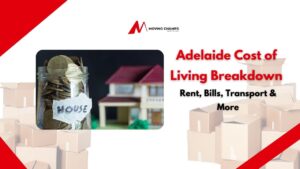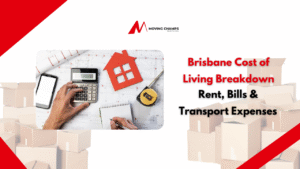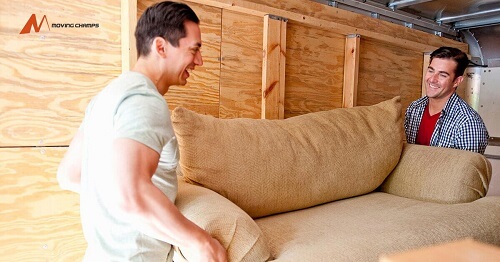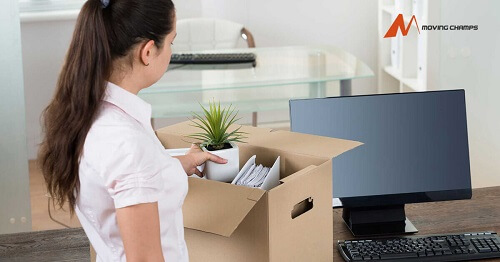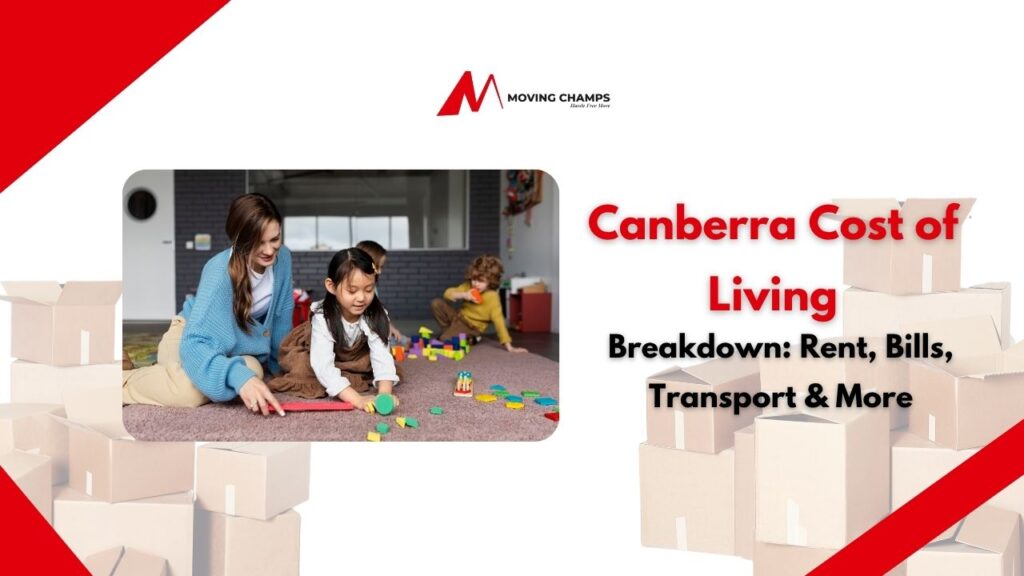Melbourne Cost of Living Breakdown: Rent, Bills, Transport & More
A Comprehensive Guide for Residents and Expats – Melbourne Cost of Living
Melbourne is frequently referred to as one of the most livable cities, an active cultural center that is known for its art and coffee scene, and large population. But, as with all major cities, living in Melbourne has an array of financial concerns. No matter if you’re a local or international student or even an international expat, knowing the expenses that come with living in Melbourne is vital to making a budget and planning your life. We’ll discuss the major expenses you should expect when making Melbourne your home.
1. Accommodation Costs
If you’re looking to live in Melbourne, the accommodation cost is usually the largest expense. Melbourne provides a wide range of housing options, ranging from apartment buildings with high-rises inside the city’s Central Business District (CBD) to sprawling suburban houses for families. However, the cost of living varies greatly depending on the location of the property and its style, as well as the current market conditions. We’ll take a look at the cost of accommodation in Melbourne to aid you in planning your move and budget efficiently.
Melbourne Rent and Housing Costs
Renting is a preferred option for young professionals, students, and even expats. Melbourne’s rental market can be competitive, particularly in the desirable suburbs that are close to the city or close to universities. Here’s an outline of the costs for renting:
Then, there are Apartments located in the City Center (CBD)
- 1-Bedroom Apartment: AUD 400-500 per week.
- 2-Bedroom Apartment: AUD 600-800 per week.
- 3-Bedroom Apartment: AUD 800-1,200 per week.
The CBD is a great option for people who are looking to be close to entertainment, work, and public transport. The prices, however, are higher due to ease of access and demand.

Apartments in the Inner Suburbs
Inner suburbs such as Fitzroy, Carlton, South Yarra, and Richmond are well-known due to their lively food scene, and cafes close in proximity to the city. Prices for rentals here are lower than those of the CBD; however, they are still at the top of the range.
- 1-Bedroom Apartment: AUD 350-450 per week.
- 2-Bedroom Apartment: AUD 500-700 per week.
- 3-Bedroom Apartment: AUD 700-1,000 per week.
Buying Property in Melbourne
If you’re looking to invest in the long term, purchasing an investment property in Melbourne is a great investment. The real estate market in Melbourne has been growing steadily over the years, and prices have varied widely across various areas.
a. Median House Prices
- CBD and Inner Suburbs: AUD 1,000,000-1,000,000 for a 3-4 bedroom home.
- Middle Suburbs: AUD 800,000-1,000,000 for a family home.
- Outer Suburbs: AUD 600,000 to 900,000 for a 3-bedroom house.
b. Median Apartment Prices
- CBD and Inner Suburbs: AUD Between 500,000 and 800,000 for a two-bedroom apartment.
- Middle and Outer Suburbs: AUD 400-600,000 for a 2-bedroom apartment.
C. Additional Costs
When you purchase a home, do not forget to include extra costs like:
Stamp Duty can vary depending on the cost of the property and could be as low as AUD between 20,000 and 50,000 or more.
- Legal Fees: AUD 1,500-3,000.
- Building and Pest Inspections: AUD 500-1,000.
Mortgage Fees: The lender might charge application fees and valuation fees. They also charge regular account-keeping charges.
Tips for Finding Affordable Accommodation
- Start Early: Start your search early, especially during peak times like the beginning of school.
- Explore Other Options: Think about suburbs that are a bit further away from the city to gain greater value.
- Lease Negotiation: In certain situations, landlords might be willing to negotiate, particularly in leases with long-term terms.
- Utilize Online Platforms: Sites such as Domain, Realestate.com.au, and Flatmates.com.au are fantastic sources.
- Make sure you thoroughly inspect properties in person or virtually to avoid fraud.
Also Read – How to Book a Removalist in Melbourne
2. Utilities and Bills
When planning your budget for living in Melbourne, utility bills and other expenses constitute a significant portion of your monthly costs. They can vary based on the size of your household, as well as your usage habits and the type of house that you reside in. If you’re living in an apartment, sharing an apartment, or owning a home, knowing the breakdown of your utility bills will allow you to organize your finances efficiently. This is a comprehensive review of what you’re likely to have to pay for utility bills and utilities in Melbourne.
Electricity
Electricity is among the most vital utilities, and its price is contingent on various aspects, such as the dimensions of the house, the number of residents, and your energy consumption practices.
- Average Monthly Cost:
- 1-2 Person Household: AUD 100-150 per month.
- 3-4 Person Household: AUD 150-250 per month.
- Tips to Save:
- Change to a lower-cost energy provider.
- Make use of energy-efficient appliances and switch off appliances when they are not being used.
- Think about installing solar panels to make long-term savings.
Gas
Gas is typically used to heat, cook, and boil water throughout Melbourne. There are many homes that make use of gas, and some depend entirely on electricity.
- Average Monthly Cost:
- 1-2 Person Household: AUD 50-80 per month.
- 3-4 Person Household: AUD 80-120 per month.
- Tips to Save:
- Make use of gas heaters sparingly and cover them with layers during winter.
- Compare gas companies to find better rates.
- Ensuring that your home is adequately insulated to keep heat in.
Water
The cost of water in Melbourne comprises both water usage and sewage costs. The price is based on your consumption as well as whether you reside in a house or an apartment.
- Average Monthly Cost:
- 1-2 Person Household: AUD 50-80 per month.
- 3-4 Person Household: AUD 80-120 per month.
- Tips to Save:
- Repair leaks immediately.
- Install water-efficient fixtures.
- Utilize a rainwater collection tank for gardening.
Internet
Melbourne is a flourishing Internet market that has a variety of companies offering a range of plans. Prices differ based on the speed and amount you choose.
- Average Monthly Cost:
- Basic plan (NBN 25- 50 Mbps) $60-$70 per month.
- High-Speed Plans (NBN 100+Mbps) Cost: AUD 80-100 per month.
- Tips to Save:
- Compare plans from different providers.
- Find special deals, bundle deals, special offers, or discounts for promotional offers.
- Select a plan that is suitable for your requirements to avoid spending excessively.
Mobile Plans
Plans for mobile phones in Melbourne are reasonably priced and provide many options, such as postpaid and prepaid plans.
- Average Monthly Cost:
- Prepaid Plans: AUD 20-40 every month (limited minutes and information).
- Postpaid Plans: AUD 30-60 per month (unlimited texts and calls with 10-50GB of data).
- Tips to Save:
- Select a plan that is based on actual use.
- Find family or group plans to get additional savings.
Tips for Managing Utility Costs
- Compare providers: Use comparison websites to find the most affordable deals on gas, electricity, and the internet.
- Monitor Usage: Keep track of your consumption and identify areas in which you can reduce your consumption.
- Bundle Services: Certain companies offer discounts when customers bundle mobile, internet, and energy services.
- Make use of energy-efficient appliances: Invest in appliances with energy ratings in order to lower the consumption of gas and electricity.
- Set up Payment Plans: A lot of providers offer monthly payment plans that assist you in managing your bills more efficiently.

3. Transportation in Melbourne: A Complete Guide to Getting Around
Melbourne is known for its well-organized and efficient public transportation network, which lets you travel within the city without a vehicle. But prices and options can vary based on your area, lifestyle, and travel needs. If you commute frequently, are a student, or are a frequent traveler, knowing the Melbourne transport system is essential to get around easily and efficiently. This is a complete overview of the many transport options and costs in Melbourne.
Public Transportation
The public transport system in Melbourne comprises trams, trains, and buses, all of which are operated by the Public Transport Victoria (PTV) network. To make use of such services, users require a myki card. (It’s a disposable smart card that can be used to top up using credit)
a. Trams
- Coverage: Trams are an iconic part of Melbourne and are primarily used to serve the inner city as well as its surrounding suburbs.
- Cost:
- 2-Hour Fare: AUD 4.60 (Zone 1 and 2).
- Daily Cap: AUD 9.20 (Zone 1 and 2).
- The Tram zone is free, and tram journeys in the CBD are completely free, making it an excellent alternative for city commuters as well as tourists.
b. Trains
- Coverage: Melbourne’s train network connects Melbourne’s city center with the suburbs and regional areas.
- Cost:
- 2-Hour Fare: AUD 4.60 (Zone 1 and 2).
- Daily Cap: AUD 9.20 (Zone 1 and 2).
- Peak Hours: Trains may be crowded during peak times (7-9 am and between 4-6 pm).
C. Buses
- Coverage Buses fill in gaps where trains and trams aren’t able to reach, especially in the suburbs that aren’t accessible to trams and trains.
- Cost:
- 2-Hour Fare: AUD $4.60 (Zone 1 and 2).
- Daily Cap: AUD $9.20 (Zone 1 and 2).

d. myki Card
- Cost: The cost is AUD 6 for the card itself (non-refundable).
- Top-Up: You may purchase credit at tram stops or on the internet.
- Concessions: Seniors, students, and concession card holders can avail of discounted rates.
3. Driving
Although public transport is convenient, a few residents prefer to drive due to their greater flexibility. However, having a car in Melbourne is not without its costs.
a. Fuel
- Cost: AUD 1.80-2.20 per Liter (as of 2023).
- Monthly Fuel Cost: AUD 150-300, based on the amount of use.
b. Parking
- CBD Parking: AUD
- 10-30 per hour, or 10-30 per hour in AUD 50-80 per day.
- Residential Parking Permits: AUD 50-150 per year (varies according to council).
Tips for Saving on Transportation
- Plan Your Travels: Make use of PTV’s app or the website to plan your travel and make sure you don’t take unnecessary trips.
- Travel Off-Peak: Certain services provide off-peak discounts.
- Walk or Cycle: Walking or cycling for short distances, cycling or walking can help you reduce costs and keep you active.
- Carpool Sharing: Share rides with your colleagues or friends to share the costs of parking and fuel.
- Take Advantage of Free Trams: You can take advantage of the free zones located in the CBD.
Also Read – Brisbane Cost of Living Breakdown: Rent, Bills & Transport Expenses
4. Groceries and Dining Out
Groceries make up a large part of the budget of those who live in Melbourne. The cost of food items can differ based on the place you shop, as well as your personal preferences in food and whether you prefer imported or local products. Melbourne is renowned for its varied food culture and offers everything from fresh local products to international delights. This guide will discuss the price of food items, provide the most economical alternatives for shopping, and give strategies to reduce costs while enjoying Melbourne’s vibrant dining scene.
Average Grocery Costs in Melbourne
The price of groceries in Melbourne will depend on a variety of factors, such as the amount of food you consume in your family, your eating habits, and the preferences you have for shopping. Here’s a brief summary of what you can anticipate spending:
Weekly Grocery Budget
- Single Person: AUD 80-120 per week.
- Couple: AUD 150-200 per week.
- Family of Four: AUD 250-400 per week.

Where to Shop for Groceries?
Melbourne provides a wide range of food shopping options, from big supermarket chains to market stalls and special shops. Here’s a list of the top choices:
Supermarkets
- Coles and Woolworths: These are the two biggest chain stores in Australia, with a broad selection of items at reasonable costs. They often have loyalty and sales programs.
- Aldi is known for its low prices, and it is a great alternative for shoppers with a tight budget. The store has a smaller range of merchandise, which includes exclusive brands.
- IGA: Independent Grocers of Australia (IGA) stores are typically smaller and located in suburbs. Prices are sometimes a little higher; however, they provide convenience and local goods.
Fresh Food Markets
- Queen Victoria Market: One of Melbourne’s most recognizable markets that sells fresh produce as well as seafood, meat, and other specialty items at lower prices than the big supermarkets.
- Prahran Market: Known for its premium food and delicious products.
- South Melbourne Market: A fantastic place to purchase fresh seafood as well as meat and other vegetables.
Online Grocery Shopping
- Coles Online and Woolworths Online offer convenient home delivery and click-and-collect options. Delivery charges vary between AUD 5 and 15.
- Amazon Fresh provides low prices and quick service to Prime members.
5. Healthcare
Healthcare is an essential aspect of living in Melbourne, and an understanding of the system is crucial for expats, residents, and international college students. Australia is renowned for its excellent healthcare services, and Melbourne is no different. Melbourne offers a variety of both public and private medical services to ensure everyone has access to medical assistance. The cost and coverage can vary depending on the condition of your residence and insurance coverage, in addition to your particular needs. In this article, we’ll provide a comprehensive breakdown of the health system in Melbourne with regard to the costs, services, and strategies for getting around the system.
Overview of Australia’s Healthcare System
The Australian healthcare system is a mix of private and public services. It is a public service, referred to as Medicare, which provides health care for free or at a reduced cost in Australia to Australian resident citizens as well as permanent residents. International students and expats generally require an insurance plan for private healthcare to pay for medical expenses.

Public Healthcare (Medicare)
Medicare is the foundation of Australia’s health system. It provides free or low-cost medical care for eligible residents.
Services Covered by Medicare
- Doctor’s Visits: Doctor’s (General Physician) appointments are completely free. Visits that aren’t bulk-billed could charge you AUD between 50 and 80, with Medicare paying a percentage of the costs.
- Hospital Care: Hospital treatments are completely free for Medicare cardholders.
- Visits to specialists: Medicare covers part of the cost, but you could incur a gap charge.
- Diagnostic Tests: Medicare covers tests like blood tests and X-rays when ordered by a doctor.
Tips for Managing Healthcare Costs
- Compare Insurance Plans: Use websites for comparison to determine the most appropriate private health insurance policy for your needs.
- Use Bulk-Billing Doctors for Medical Care: Find physicians who can bill you in large quantities to reduce out-of-pocket costs.
- Claim Medicare Rebates: Always claim your Medicare rebates for eligible services.
- Consider Additional Insurance: If you need regular optical, dental, or physiotherapy services, coverage could save you money.
- Keep Yourself Healthy: Preventive health care, like regular examinations and healthy habits, can help reduce long-term health conditions.
6. Education and Childcare
The costs of education and childcare in Melbourne differ based on the type of institution and government subsidies.
Childcare Costs
- Daycare: $100 to $180 per day (CCS subsidies are available)
- Nannies: Pay ranges from $25 to $40 per hour. (In-Home Care Subsidy available to families who are eligible)
- Preschool: Free – $1500/year, Private $5k to $15,000/year (Free Kindergarten for kids who qualify)
Primary & Secondary School Costs
- Public schools: $3,000 annually. (extra cost for uniforms, trips)
- Private schools: Catholic: $2,000 – $8,000/year, Independent: $8,000 – $40,000/year

7. Miscellaneous Expenses
Make sure you include any other expenses, such as
- Clothing: 50 to 100 cents per piece for moderate-priced brands.
- Haircuts & Personal Care: Haircuts for personal care are around $AUD 30-60 for males and $AUD 30-60 for women.
- Journey: If you’re looking to visit Australia, Domestic flights are priced from AUD 100 to 300 one-way.
Tips for Managing Living Expenses in Melbourne
- Housing: Shared housing or renting within the suburban areas.
- Transportation: Use your Myki credit card, bikes, or public transportation to save money.
- Groceries: Food shopping from Aldi, Costco, and local markets, and cooking at home.
- Utilities: Check the energy providers and choose appliances that are energy efficient.
- Healthcare: See a doctor who bills in bulk and confirms Medicare eligibility.
- Education: Make use of the government’s subsidies for children’s education and select public schools.
- Entertainment: Participate in free events and make use of concessions for students as well as regular concessions.
Why Hire a Professional Removalist for Your Move?
Making smart choices in your budget and negotiating discounts can help reduce the cost of living in Melbourne.
If you are planning to move within Melbourne, employing a professional removalist such as Moving Champs is the best method to ensure a smooth and easy transition. As experienced House Removalists as well as Furniture Removalists, we offer the highest quality of moving services to meet all requirements, ranging from a straightforward move to more extensive, complex relocations.
The Man With A Van provides a variety of options for those who require assistance with just a few things or the entire household. If you’re in need of help, our Last Minute Movers can meet urgent requests for moving, making sure that you have the assistance you require when you’re in a hurry. If you choose Moving Champs, you can be sure that the move will be taken care of effectively and professionally.
Also Read – My Name is Sara, and I Moved From Adelaide to Melbourne
Conclusion
Being a resident of Melbourne is an experience that is atypical, but it’s essential to prepare for the costs that go along with it. If you’re aware and ready for expenses like utilities, housing, as well as transportation and entertainment, it will be possible to enjoy the best of the city without spending an excessive amount. It doesn’t matter if you’re drawn to Melbourne due to its opportunities for education or its vibrant culture. A well-planned budget will allow you to get the most value from everything Melbourne offers.
Popular Posts
Popular Categories
Our Services
Request A Free Quote







